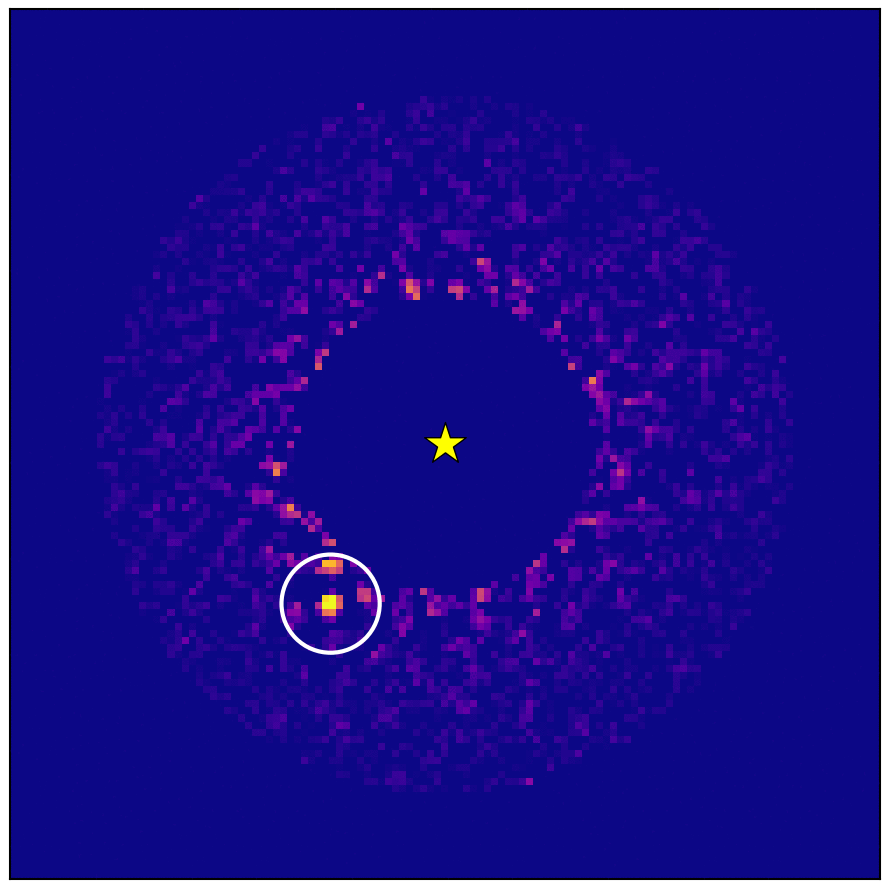
When astronomers discovered the first worlds orbiting other stars thirty years ago, they also began taking what might be called the galactic planetary census, tallying up the numbers and types of exoplanets in the Milky Way. Although it’s infeasible to thoroughly survey all of our galaxy’s hundreds of billions of stars, a representative sample of them could offer important information. By studying the planetary populations of such a sample, researchers hope to learn which sorts of worlds are most common or rare—and how our own Earth and solar system measure up against them.
But there are several different ways to find planets, and each tends to work best for different types of worlds, leading to potentially skewed results. The dominant techniques to date infer a planet’s presence by looking for its subtle influence on its star, and they are most sensitive to giant planets very close to their stars. Such worlds have orbital “years” as small as a few days or weeks—and none exist in the solar system. In contrast, viewing planets directly—called direct imaging—requires distinguishing them from a star’s overwhelming glare, which is easiest to do for giant planets at a system’s outskirts. If such orbits were around our own sun, they would place most of these planets far beyond Pluto.
Fortunately, new methods and more expansive data sets are now letting scientists bridge the gap between these extremes, combining results from multiple planet-hunting techniques to gain better, clearer views of the Milky Way’s true planetary population. A new study published in Science is one of the first successes in this synergistic approach, netting not only a newfound “middle of the road” planet but also a broader strategy for finding and investigating many others. The biggest and brightest of those to-be-discovered planets could also be good candidates for future direct imaging efforts, potentially allowing astronomers to discern their atmospheres and climates.
“When we combine [motion and imagery] together, we get all three key properties of the planet—its orbit, its mass and its atmosphere—so we learn a lot more,” says Thayne Currie, a planet-hunter at NASA’s Ames Research Center and lead author of the study.
Catch a Star
Currie and his colleagues found their new planet, a giant world called HIP 99770 b, by comparing data on the motions of its star collected in 2021 by the European Space Agency’s Gaia spacecraft with similar but less precise measurements taken in the early 1990s by Gaia’s predecessor, ESA’s Hipparcos satellite. Gaia and Hipparcos were both meant to map the Milky Way’s stars (rather than its planets) using a technique called astrometry to precisely track stellar positions, distances and motions. But astrometry can reveal planets, too: A planet orbiting a star can cause the star’s position to cyclically shift ever-so-slightly, oscillating back and forth in the plane of the sky. By pinning down the size and recurrence of that shift, astronomers can determine an unseen planet’s mass and orbit.
The planet’s initial discovery and its photographic follow-up were only possible because of the decades-spanning Gaia-Hipparcos data, which allowed detection of HIP 99770 b’s long orbit. That combined catalog itself had been years in the making. After Gaia’s first data release in 2016, Timothy Brandt, an astronomer at the University of California, Santa Barbara, and co-author on the new study, published a list of tens of thousands of stars cross-checked against and augmented by the earlier Hipparcos observations, updating them again in 2021 after Gaia’s most recent data release. The result was a roughly 25-year window into how those stars moved across the sky.
Several teams have begun dredging the new database for stellar companions, “each with their own spin on exactly what information to take in choosing the target,” says Caroline Morley, a researcher who studies exoplanet atmospheres at the University of Texas at Austin and was not part of the new study.
In the case of HIP 99770 b, the Gaia-Hipparcos data showed it to be a gas-giant world orbiting its star at a distance a bit farther than Uranus from the sun—sufficiently big, bright and far from its stellar host to be within reach of direct imaging. Follow-up observations performed with the SCExAO direct imaging instrument at the Subaru Telescope on Mauna Kea in Hawaii confirmed those suspicions, revealing the planet as a dot clouded with molecules of water vapor and carbon monoxide. Climate models suggest the planet has a temperature between 1,300 and 1,400 kelvins (between 1,880 and 2,060 Fahrenheit). Although distinctly unearthly, altogether HIP 99770 b’s properties make it a comparatively close cousin to Earth.
“It is the first [finding from this database] that can really claim, ‘This is probably a planetary mass,’” says Beth Biller, who was not part of the research team. Biller, an astronomer at the University of Edinburgh in Scotland, went on to note that the heavy world lies in the gray area between planet and brown dwarf and that some might object to classifying it as a planet. Regardless, “it’s certainly the lowest-mass object that has been detected by this method,” she says.
Worth a Thousand Words
Results like this one can help fill in lingering gaps in the galactic planetary census. Besides being limited to very large planets in very wide orbits, current direct imaging efforts work best for worlds that are very young—between 10 million and 100 million years old—and still aglow with heat left over from their formation. The cumulative result of all those earlier surveys, Biller says, was important but still underwhelming. “What we found is that [hot, young, wide-orbiting] giant planets are pretty rare,” she says.
While many stars are expected to have some sort of planet in orbit, direct imaging surveys have found that far fewer have a giant planet at their edges. Infrared images reveal insights into the atmospheres of these worlds, and models provide an estimate of their mass. Of the dozens of exoplanets captured by direct imaging, astronomers have only managed to more precisely narrow down the masses of two, using follow-up measurements with indirect planet-detection techniques. Part of the problem is the preexisting observational preference for young planets, which have correspondingly youthful host stars that are much more active than more mature stars, and thus more disruptive for star-based measurements of a companion’s mass.
“Once you have a directly imaged planet, there is a degree of guesswork in backing out its physical properties,” Brandt says. Fusing astrometry and direct imaging not only opens the door to finding more targets; it also eliminates some of this guesswork by revealing each newfound planet’s orbit and mass, along with its atmosphere.
Although Gaia targets two billion stars, Hipparcos only studied 100,000, all relatively bright and close to Earth. Currie estimates that roughly a third of the stars studied in the combined catalog have companions, most of them low-mass stars. If only one out of 100 of the cataloged stars with companions have a photographable planet, the new fusion of planet detection methods should significantly increase the total of worlds astronomers could soon directly see. By the end of its decade-long survey, researchers say, Gaia could identify as many as 100 additional planets as candidates for direct imaging with current instruments—more than four times as many directly imaged worlds as identified to date. And this will broaden our knowledge about planetary systems beyond just the youngest and brightest, perhaps showing more worlds like our own.
“The yield of new discoveries is higher than we would get if we just did a blind search,” Currie says, “and the information that we get is a lot richer than we would get if we just did direct imaging.”



